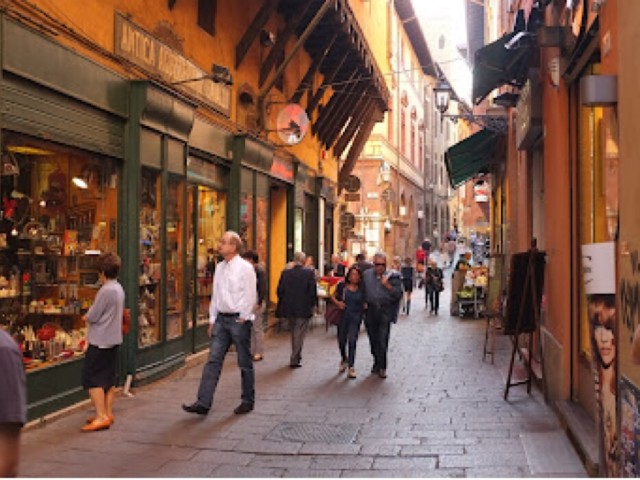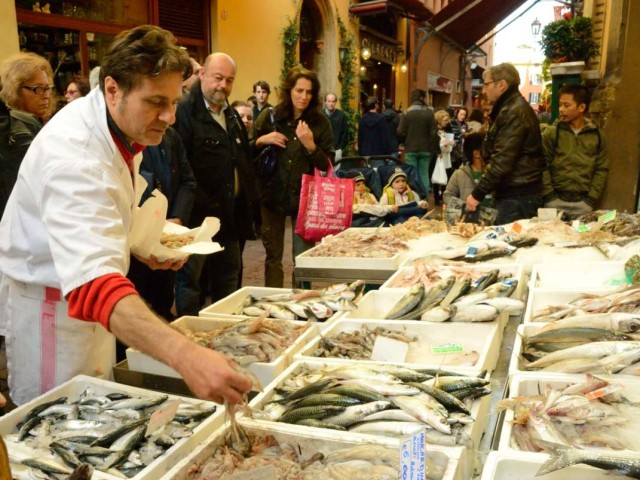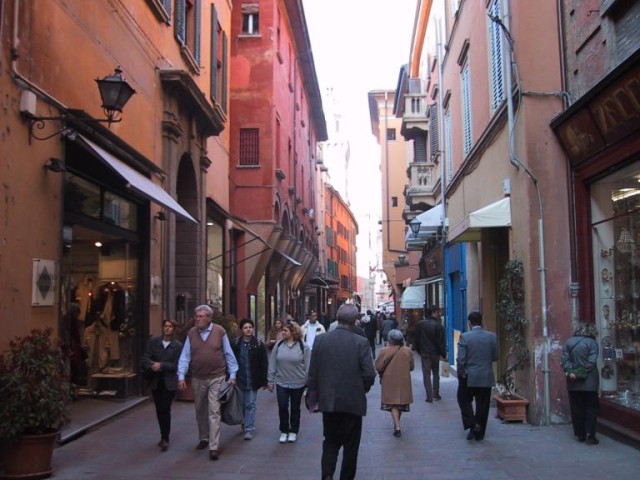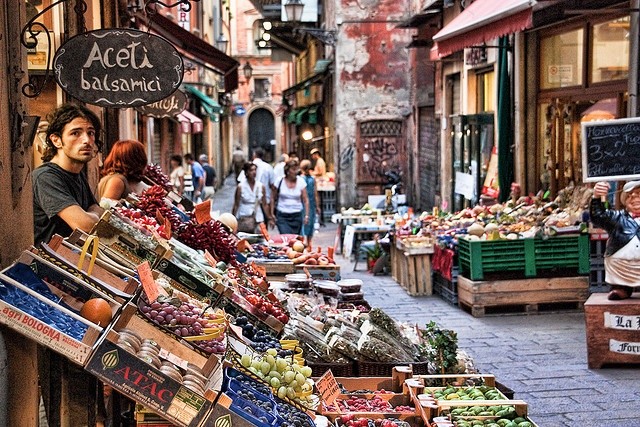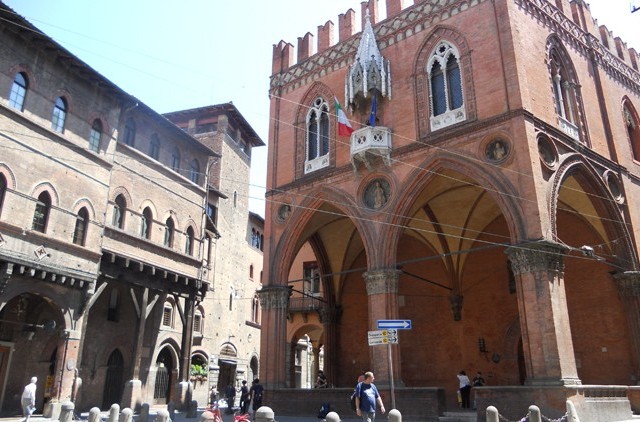Interesting Streets in Bologna
Wednesday, March 16th, 2016
I usually do some volunteer work in Bologna. I work at a program called Scioglilingua at the wonderful library called Sala Borsa (borsa = stockmarket, it was once just that) and have done some translations for the city government (comune) of Bologna. My first assignment for the comune this year was to translate a tourist brochure about some of the old crafts/trades in Bologna. Much of the brochure was actually as much about the streets as the crafts themselves. I always learn a lot about both the language and about Bologna so I find this work very interesting and satisfying. Most of these streets are in the very center of Bologna which is, of course, the oldest part. Piazza Maggiore is really the heart of Bologna. A gathering place for celebrations of whatever sort and in the summer a place where they show outdoor movies on a giant screen in the evenings. But there was also a market for fruits and vegetables and, apparently cloth, for a long time up until 1877. One interesting detail, that I had never noticed before was a piece of marble near the base of the wall of a large adjoining building which has measures of length built into it. It served as a measuring standard to assure that the trade was fair – sort of like a yardstick built into the wall.

                 Measurement for the old market on the wall on the side of Piazza Maggiore
There is a street call via Dapperie. Now one would think that this had something to do with drapes, i.e. heavy curtains, but no it derives from the word “drappo†which was once the name for woolen cloth that was especially used for men’s clothes. Now the street has salumerie, the two best fish markets in Bologna, a florist, a wine shop and perhaps the best bakery in Bologna.
Another street called Clavatura was a street of metal workers, some of whom made locks. The modern word for locks is “serratura†but an older word was “chiavadura†a word from which came “chiave†(key). So this a morphed into Clavatura, the name of the street. Via Calzolerie comes from calzolaio (cobbler) and obviously was the shoe maker street. Via Caprarie comes from an old word for a specialized butcher shop, specifically for goats (capri).
Via Pescherie Vecchia was where they located the fishmongers (pescheria is a fish shop, vecchia = old). Now I could find only a single fish shop on the street but is has several shops for salumi, meat markets and lots of fruit and vegetable stalls. I highly recommend a visit to this narrow and colorful little street.
Every once in a while I come across some word or phrase that is totally confusing. This was true when I was translating something about the Palazzo della Mercanzia, a striking building close to the famous two towers. It was the original headquarters of the guilds in the 14th century. There was something in the description about the “alti merliâ€. Hmmm. “merli†translates as “blackbirdsâ€. High blackbirds!? I not only searched the excellent online dictionary Wordreference.com but also did a general web search without success. I even went to the sight and looked so see if I could see anything on the building that gave me a clue – no success. So finally I emailed Monica, my “boss†at the comune and she sent me a picture. Then given that info I found an online specialized dictionary that provided translations of architectural terms (isn’t the web wonderful!). So “high blackbirds†is really the term for “battlementsâ€. The battlements were where archers could be reasonably protected while shooting arrows at those poor souls on the ground.
There are a bunch of interesting (and some not so interesting) facts in the brochure. I’m looking forward to the next one and now have found a second translation opportunity with an Italian non-profit based in Milan.
